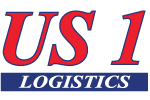🚛 Why Most Freight Agents Set Themselves Up to Stall
Let’s be honest—“grow revenue” sounds good on paper. It looks great in a sales meeting or scribbled across a whiteboard. But if you’re a freight broker agent, drayage agent, or navigating your way through the competitive freight agent broker space, chances are you’ve caught yourself saying:
“I just want to move more loads and make more money.”
Here’s the catch: that kind of goal is too broad to act on. It’s like saying you want to get in shape without deciding whether that means running a marathon, lifting weights, or simply walking more each day.
In freight, your business runs on margins, volume, and client retention. Every lane has different profit potential. Every customer has different needs. And every mode—LTL, FTL, reefer, flatbed—brings unique operational realities. So if your revenue target doesn’t drill down to those specifics, you’re playing the game blindfolded.
Top producers don’t just hustle harder—they plan smarter. They set goals like:
-
“Close 3 new clients this quarter in the Southeast reefer market”
-
“Add 10 loads per month to my existing LTL route from Dallas to Chicago”
-
“Increase margin per load by $50 on port drayage shipments”
These aren’t just goals—they’re strategies in disguise. And they give you a daily roadmap to execution.
So if you’re stuck spinning your wheels, it might be time to swap vague ambition for focused action. The difference could be the turning point your business needs.
📊 The Freight-Friendly Formula for Real Revenue Goals
To grow like a pro—not just hustle harder—you need a simple, freight-specific revenue planning framework. Here’s how to break it down:
1. Set a Monthly Gross Profit Goal
This is your North Star. For example:
🎯 $15,000 in gross profit per month
2. Back Into Your Load Count
Know your average margin per load? Great. If it’s $150:
📦 $15,000 ÷ $150 = 100 loads/month
That’s 25 per week. Now you’ve got something to aim at.
3. Break It Down by Mode or Niche
-
FTL may be fewer loads, higher profit
-
LTL may be higher volume, tighter margins
-
Drayage or intermodal? Consider port seasonality and transit time
Tracking lane performance and customer profitability helps you double down where ROI is highest.
🧠 Why It Works
Freight Isn’t One-Size-Fits-All—So Why Treat Your Income Like It Is?
In the transportation world, generalists get by—but specialists get ahead. If you’re a truck freight broker, trucking agent, or freight agent broker, trying to grow your revenue by taking every load that comes your way can leave you chasing low-margin freight, burning out your carriers, and diluting your brand.
Here’s what the top-performing agents do differently:
They treat their revenue like a strategy, not a surprise.
That means crafting goals that align with:
-
Preferred customers who respect your time, pay reliably, and move consistent volume
-
Best-performing lanes where you’ve got strong carrier relationships, repeat business, and predictable rates
-
Mode-specific margins, whether you’re focusing on high-yield FTL, reliable LTL, or profitable niche modes like reefer or flatbed
This approach does two powerful things:
-
It gives you control over your earnings. You’re no longer reactive—you’re proactive, targeting the types of freight and clients that fit your strengths.
-
It makes scaling easier. Once you know what’s working, you can replicate it across similar customers, regions, or modes.
The bottom line? When you stop saying “yes” to everything and start building your business around what works best, you move from scrambling to strategic.
Set goals that match your lanes, customers, and capacity—and watch your business grow with purpose.
🗣️ “But What If I Miss My Goal?”
That’s part of the game. But having a target means:
-
You can course-correct faster
-
You know what’s working (and what’s not)
-
You stay focused when things get busy
Even a freight agent just starting out benefits from aiming at a clear, measurable number.
🔄 Pro Tip: Review Weekly, Adjust Monthly
Freight is fast-moving. What worked last quarter might stall this one. Top freight broker agents review their numbers weekly and adjust strategies based on:
-
Load counts
-
Profit per load
-
Carrier costs
-
Client consistency
📦 Ready to Build Your Plan?
If you’re a freight agent, intermodal agent, or truck freight broker, chances are you’ve already got big ambitions—but without the right structure, even the best goals can turn into guesswork.
Whether you’re trying to hit your first $10K month or scale past $100K in booked revenue, you don’t need to wing it. You need tools that translate your hustle into measurable progress.
That’s where I come in.
I’ve put together freight-specific templates, lane-based revenue calculators, and sequencing strategies that help you track your numbers, optimize your client mix, and forecast like a pro. These aren’t one-size-fits-all spreadsheets—they’re plug-and-play tools designed for:
-
LTL and FTL freight broker agents
-
Drayage and port-focused agents
-
Agents booking reefer, flatbed, or specialized loads
If you’re serious about growth but tired of flying blind, drop a message. I’ll send you a revenue planning sheet tailored to your business model, plus tips on how to align your sales outreach with your financial goals.
Let’s stop hoping for better months—and start planning for them.


Recent Comments